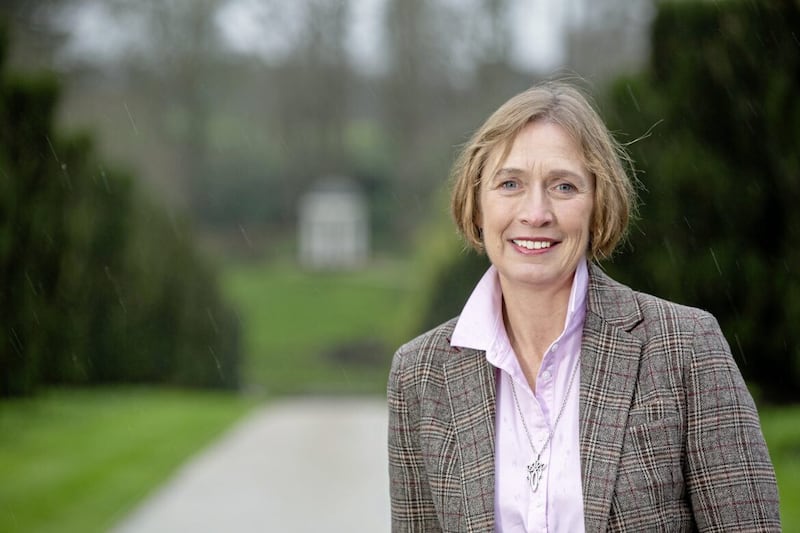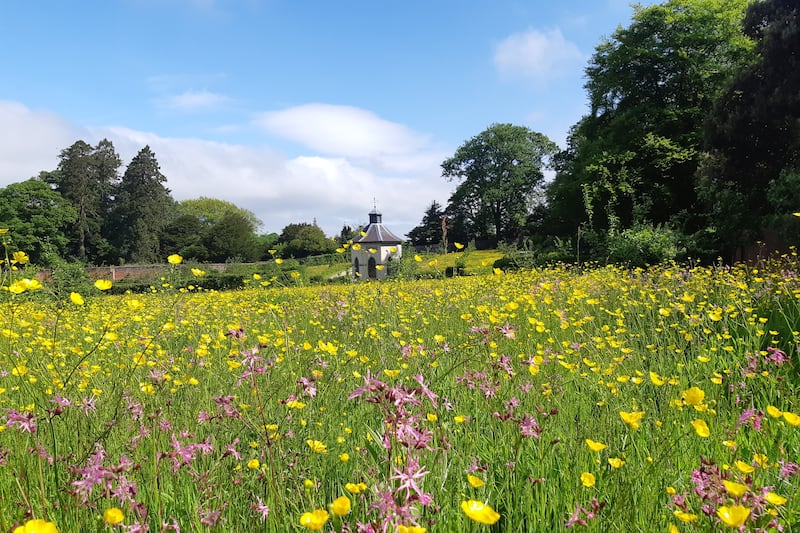Like all us gardeners, the staff that tend the gardens around Hillsborough Castle are gearing up for both a busy and a rewarding time in the months ahead.
The ornamental displays begin with the spring-flowering bulbs and continue right through to the autumn. One of the highlights of the expansive Co Down gardens, much of which are parkland, are the wildflower meadows.
Overseeing their maintenance, as well as re-planting and sowing where necessary, is garden manager Claire Woods, who advocates growing wildflowers to support native wildlife, by providing sources of pollen and nectar for a variety of insects.
She notes that the best sources of nectar and pollen, and those most beneficial, are from native plants of local provenance that have evolved with the local wildlife over thousands of years. The ideal seed mix, she says, “is one that suits your soil conditions, and contains seeds of local provenance”.
“Wildflowers are those herbs and flowers that are found growing naturally in our landscape, they have not been bred or cultivated in a nursery or have arisen in a garden,” says Claire.

“Often wildflower mixes include many colourful annuals and whilst they flower and give a good show for one year they do not flower again in subsequent years – these include cornflowers, corncockle, corn camomile and poppies in recent years, other cottage garden annuals such as cosmos and calendula have been added to these mixes to add more colour and impact.”
At Hillsborough Castle, the first wildflower meadows were sown more than 30 years ago and every year in June put on a fantastic display of orchids. The most recently sown perennial meadows are in the walled garden under the apple trees, where they are now in their fifth year.
While there’s often an assumption that growing wildflowers isn’t especially labour-intensive, arguably the opposite is true.
“Whilst the annual mixes are attractive to look at, they need to be resown every year, so it is better to sow perennial mixes,” says Claire.
“These typically take a couple of years to establish, but will flower for many years with a little careful management – a topic for another day.”
The perennial plantings are in bloom from when the cowslips come out in June through to the end of September when the knapweed and geraniums are still in flower.
When it comes to both perennials and annuals, “correct ground preparation is vital for success,” says Claire, who recommends starting by removing vegetation.
Ironically, this is done in some instances using glyphosate, however, she suggests a more “environmentally friendly” method that involves a tight cut followed by the removal of the turf and upper layer of nutrient rich soil.
“For spring sowing, prepare the bed in March and for autumn sowing, do the preparation in July or August,” she says.
The remaining soil should be worked over to a depth of10cm and raked to a fine tilth, lifting all stones bigger than 5cm.
“If you have time, you can leave the seed bed for a several weeks to allow weed seeds to germinate – these can then be removed before sowing,” says Claire.
The seed should be sown onto a damp seed bed, she says, mixed with some dry sand so you can see where the seed has been sown.
“It should then be rolled in, or if you don’t have a roller use the back of a flat rake to tamp it in thus ensuring good seed soil contact, which is so necessary for germination.”







